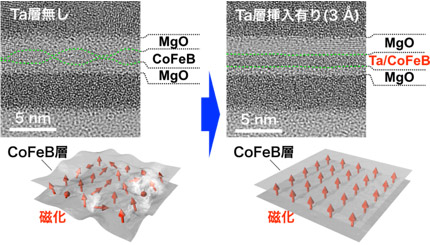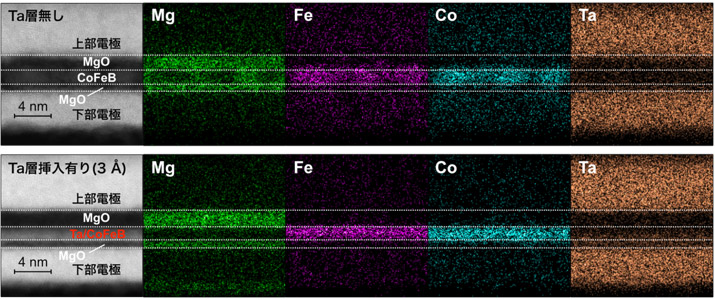

AIST: Next-generation non-volatile magnetoresistive memory: Voltage-driven MRAM
-Atomic layer control, improved device flatness and magnetic stability-
-Development of next-generation non-volatile magnetoresistive memory MRAM-
Development overview:
Adopt tantalum:
Using tantalum controlled at the atomic layer level as a base, we succeeded in flattening the magnetic storage layer.
Suppress atomic diffusion:
Suppresses atomic diffusion, which causes deterioration of magnetic stability and voltage magnetization control efficiency
Achieves ultra-low power consumption:
Expected to realize next-generation magnetoresistive memory MRAM with ultra-low power consumption
AIST
New Principle Computing
Non-volatile memory team
Research team:
Adopted tantalum controlled at the atomic layer level.
It is a technology that dramatically improves the magnetic stability of MRAM.
Featured voltage magnetization control technology:
The voltage controls the magnetization of the magnetic storage layer made of ferromagnetic metal.
“Voltage magnetization control technology is attracting attention as a key technology that reduces the power consumption of MRAM.”
Voltage drive MRAM:
A voltage-driven MRAM that uses the newly developed magnetic storage layer.
The current at the time of writing can be suppressed to the utmost limit.
Significant reduction in drive power:
The current mainstream STT-MRAM is a current writing method.
Voltage-driven MRAM can significantly reduce drive power compared to STT-MRAM.
This will lead to the realization of next-generation MRAM with ultra-low power consumption.
https://www.aist.go.jp/aist_j/press_release/pr2021/pr20210721/pr20210721.html